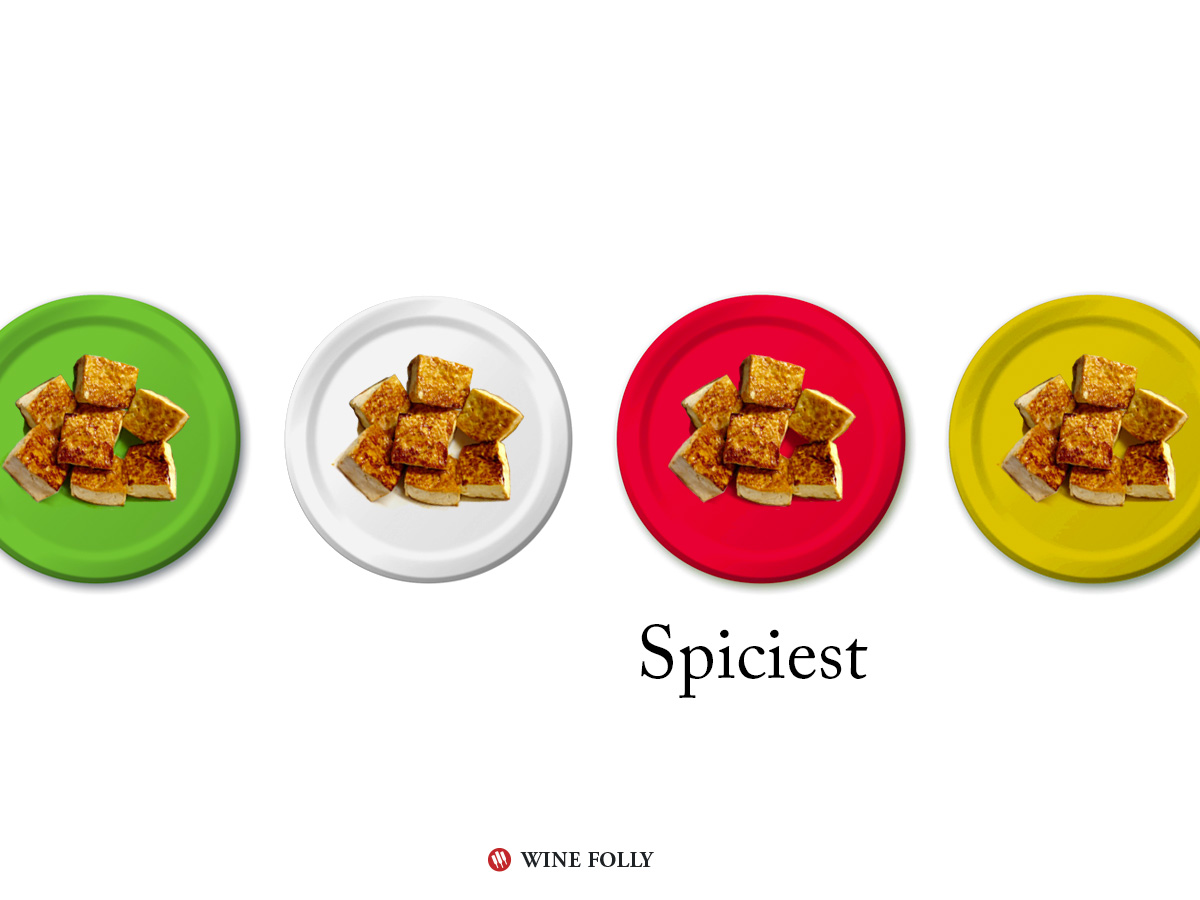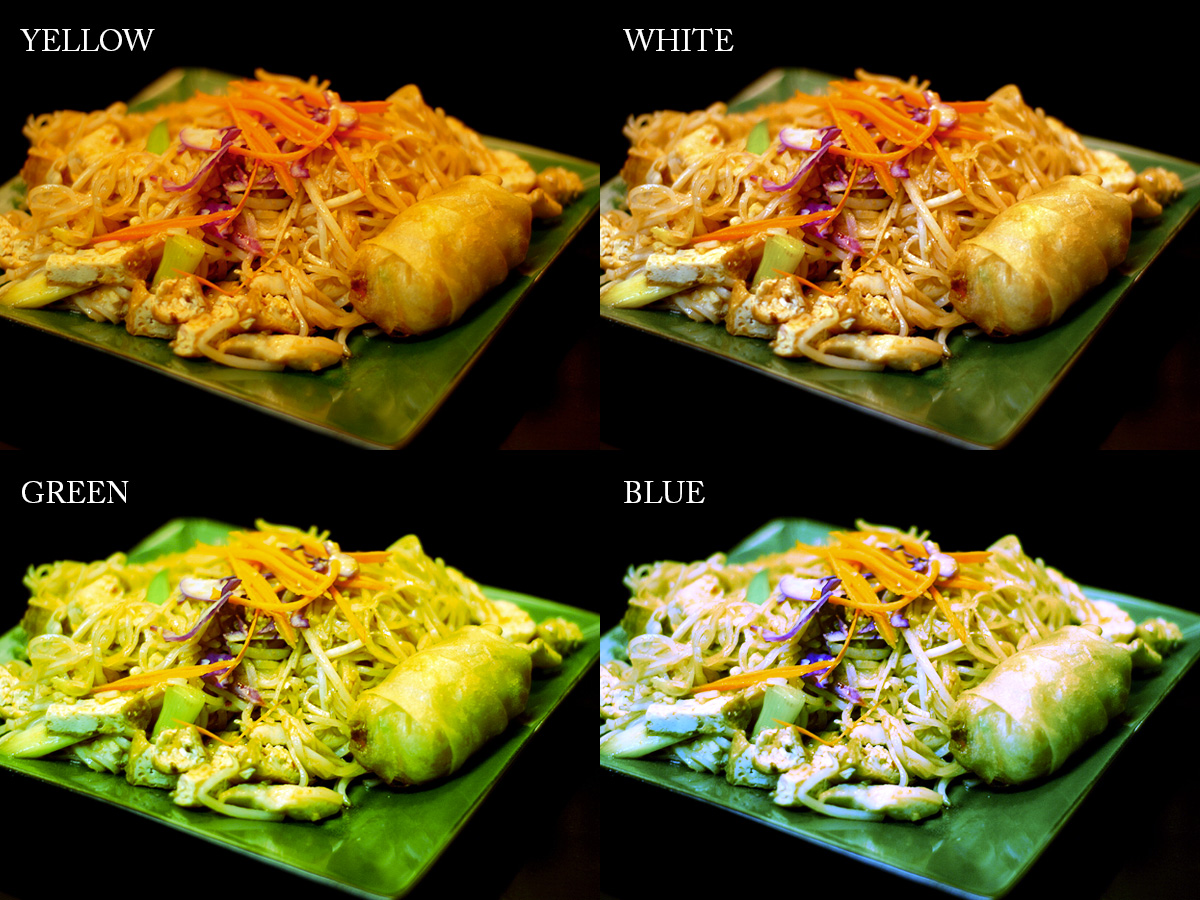Our sensory biases are imprinted at a young age when we associate colors with foods. For example, we correlate the sweet, spiced, citrus flavor of an orange to the color orange. How color affects our perception of foods and drinks can have a strong impact on how much we like them.
Here are a few striking examples:

Red
The color red is most commonly associated with sweetness and spice. In one test, when spicy bean curd was served on a red plate it was reported to have the highest spiciness factor (vs. when it was served on yellow, white, or green plates).
In another study, a Riesling wine was reported to taste the sweetest when served under red lighting.

Blue
In a study conducted in the 1970s, test subjects ate steak and french fries under special lighting. When it was revealed that the steak and fries were dyed blue and green, some subjects became immediately ill.
Oddly enough, in another study, Riesling wines tasted less sweet and were liked more when they were served under blue lighting than under green or white lighting. Finally, it was shown that sweet foods tasted less sweet under blue lighting.

Yellow
Foods taste better and you’ll eat more of them under yellow lighting. One study demonstrated that foods served under yellow or white lighting were enjoyed more than when served under green or blue light. So, if you’ve been thinking about painting your kitchen, you might take the hue seriously.
Color = Flavor in Wine
Our perception of flavor is influenced so much by hue that it can hinder our ability to perceive taste correctly. A group of wine experts were asked to assess some samples of Chardonnay and Pinot Noir. What they did not know was that the Chardonnay had been taken and split into multiple samples including one dyed red. When the tasters assessed the red-dyed Chardonnay, they identified tasting notes associated with red wine.

Practice “True” Blind Tasting
Regular blind wine tasting involves not knowing the wine but still being able to see its color. A “true” blind tasting means you can’t even see the color of the wine while assessing it. You can do this cheaply with a blindfold or, if you’re serious about it, with an opaque black wine glass.
The benefit of this method is that you are completely disconnecting your smell/taste experience from your natural perceptions associated with color. The benefit with tasting wine is that there are hundreds of possible flavors to be found in wine, and it frees your brain up to discover tasting notes that you may have never thought of.
I tested this with a glass of Pinot Noir (I didn’t know it was Pinot at the time) and here were some of the more interesting flavors I came up with that aren’t typically associated with this wine:
- Dragonfruit
- Sour Plum
- Dill Pickle
- Star Fruit
- Strawberry Cream
- Brown Sugar
Last Word: See Color in Action
The next time you go to the grocery store, look around and see how color influences each section of the store. For example, take note of the color of the can of beans you prefer and the packaging used on your favorite brand of potato chips. What color is used on diet brands (I bet you’ll see a lot of white and light blue!). All of these factors come together and influence our preferences under a discipline called sensory sciences and it’s a rapidly expanding field.

Up Next: The Many Colors of Wine
Get a better understanding of the color of wine by seeing the spectrum of colors that wine has to offer in the Complete Color of Wine Chart.